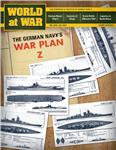
|

|

|

|
 |
|
World at War, Issue #96 - Game Edition
|
|
|


|

|
 |
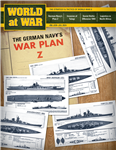
|

|

|

|
 |
|
World at War, Issue #96 - Magazine
|
|
|

War Plan Z: The Kriegsmarine Strikes: When the war started, the German Navy was unprepared for a surface campaign in the Atlantic. However, the aborted pre-war “Plan Z” had called for the creation of a fleet that could challenge the Allies in that way. Had Hitler followed that strategy, the war in Europe would have been entirely different.

|

|
 |
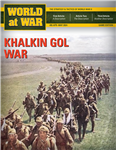
|

|

|

|
 |
|
World at War, Issue #95 - Game Edition
|
|
|

Khalkin-Gol War is an operational-level, two-player wargame covering a “what if” Japanese-Soviet war in Mongolia in 1939. The historical campaign saw a series of limited actions in the late spring and early summer of 1939 along the Khalka River (Khalkin-Gol) on the Manchukuoan-Outer Mongolian border. The campaign ended in a corps-level battle in August 1939 in which the Soviets decisively defeated the Japanese and produced a cease-fire between the two antagonists. The assumption of the game is that both Tokyo and Moscow decided instead to turn this into a full-scale war.

|

|
 |
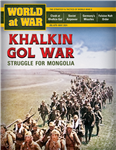
|

|

|

|
 |
|
World at War, Issue #95 - Magazine
|
|
|

Khalkin-Gol War in Inner Asia In 1939 Japan and the USSR fought a small war on the border between Manchukuo (Japanese-controlled Manchuria) and the People’s Republic of Mongolia (a Soviet satellite). The fighting’s outcome turned Japanese ambitions toward the Pacific, but that was not foreordained. The Japanese made plans for a wider war against the Soviets, and that easily might have been the scenario that played out.

|

|
 |
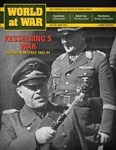
|

|

|

|
 |
|
World at War, Issue #94 - Game Edition
|
|
|

W94 Kesselring’s War: Decision in Italy 1943-44 (Joseph Miranda) is an operational level two player wargame covering the campaign in Sicily and southern Italy, July 1943 to February 1944. The game covers the months from Operation Husky through the initial landings in the southern peninsula up to the Anzio invasion and first battle of Monte Cassino. This was the time when the Allies could have gained a decisive victory but were stopped when German forces under the command of Field Marshal Albert Kesselring fought a series of delaying actions and then held a line south of Rome.

|

|
 |
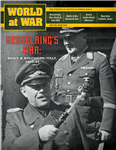
|

|

|

|
 |
|
World at War, Issue #94 - Magazine
|
|
|

Kesselring’s War: On 9 July 1943 two Allied armies landed on Sicily. Instead of the quick victory their high command had anticipated, that campaign and its sequel on the mainland turned into a contest of attrition in which the Germans conducted a strategically successful delay action. The German commander responsible for that turn of events was Albert Kesselring.

|

|
 |
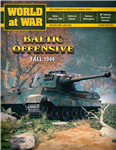
|

|

|

|
 |
|
World at War, Issue #93 - Game Edition
|
|
|

W93 Baltic Offensive, Fall 1944 (Javier Romero) Baltic Offensive: Fall 1944 is a two player simulation of the Soviet offensive in the Baltic countries in the Fall of 1944. The Soviet player must conquer as much territory as possible within a limited time frame, while the German forces must try to delay the Soviet advance as much as possible. The Soviet player has a positional advantage and numerical superiority, but it has a tight timetable to clear the Baltic countries so that the Red Army can return to the decisive direction of the war: the Vistula-Oder-Berlin axis. Each game turn represents 10 days. Each hexagon is 10 miles (15 kilometers) from side to opposite side. Units are corps, divisions, brigades or equivalents, and specialized smaller units.

|

|
 |
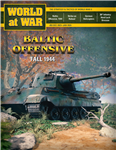
|

|

|

|
 |
|
World at War, Issue #93 - Magazine
|
|
|

The Soviet Baltic Offensive, 14 September–24 November 1944
After crushing Army Group Center, the Red Army cleared the north flank of the front during the late summer and fall of 1944. Along the Baltic, the Soviets regained Estonia and most of Latvia and Lithuania. Even so, German Army Group North—renamed Army Group Courland—remained a strategic thorn in the side of the Soviets until V-E Day, despite repeated Soviet attempts to eradicate it.

|

|
 |
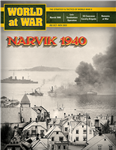
|

|

|

|
 |
|
World at War, Issue #92 - Game Edition
|
|
|

Narvik 1940 is a two-player wargame of low to intermediate complexity that simulates the battles around Narvik, Norway in 1940. To control complexity and present an overall force commander’s view of the battle, the game uses a tactically scaled map and units of maneuver coupled with an operationally scaled turn length. The Allied player is normally on the offensive, trying to clear the Germans from the Narvik area, but the German player has opportunities for counterattacks. The game starts in mid-April, after the Germans seized control of Narvik and just as the Allies have made their initial landings to begin their counteroffensive. Narvik models a battle fought in Arctic conditions with extremes of weather and long daylight hours. There was a chaotic command system on the Allied side and an overextended force on the German.

|

|
 |
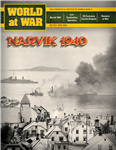
|

|

|

|
 |
|
World at War, Issue #92 - Magazine
|
|
|

Narvik 1940 On 6 April 1940 the troops of the German 139th Mountain Infantry Regiment embarked on a destroyer squadron in Bremen. They were led by Lt. Gen. Eduard Dietl, commander of 3rd Mountain Infantry Division. Their target was Narvik, a port above the Arctic Circle. The fighting there would last for over two months.

|

|
 |